Cruise ships are some of the largest vessels in the world. So if you’ve ever wondered how cruise ships float and don’t tip over, you’re certainly not alone.
With as many as 20 decks, heavy swimming pools on the top, and not much ship below the water… How does a cruise ship float and not topple over?
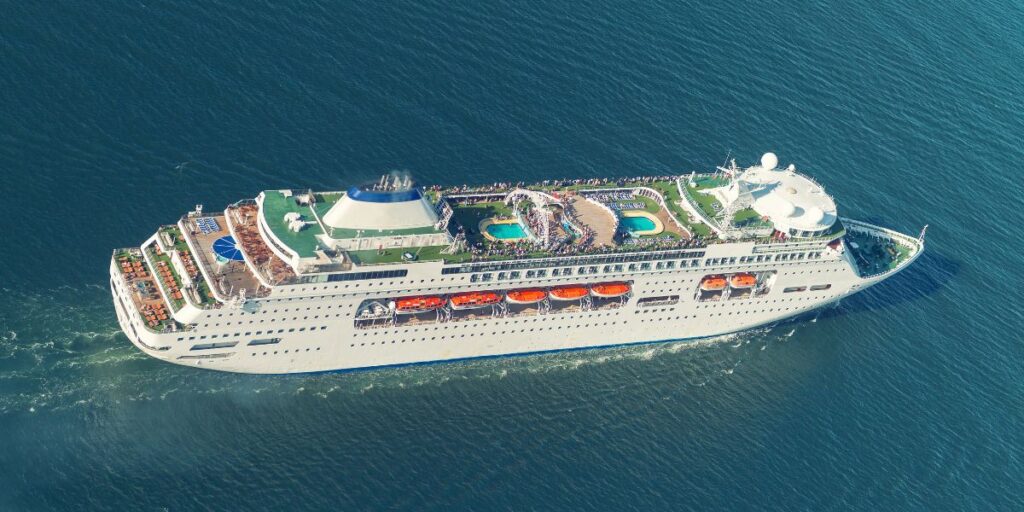
To find out, I spoke to a helpful cruise ship pilot by the name of John, who explained the physics in a way that we can all understand…
The science of floating
Cruise ships stay afloat because they have a U-shaped hull that displaces water outwards and downwards. As the water tries to fill this space, the energy pushes the ship upwards. This law of physics is known as Archimedes’ principle.

Archimedes’ principle states that a body immersed in a fluid is subjected to an upwards force equal to the weight of the displaced fluid. This is known as ‘the first condition of equilibrium’.
The upward buoyant force that is exerted on a cruise ship in the water is equal to the weight of the water that it displaces.
For example, Anthem of Seas displaces 78,130 metric tonnes. This is equivalent to 76,224,390.2 litres of sea water.
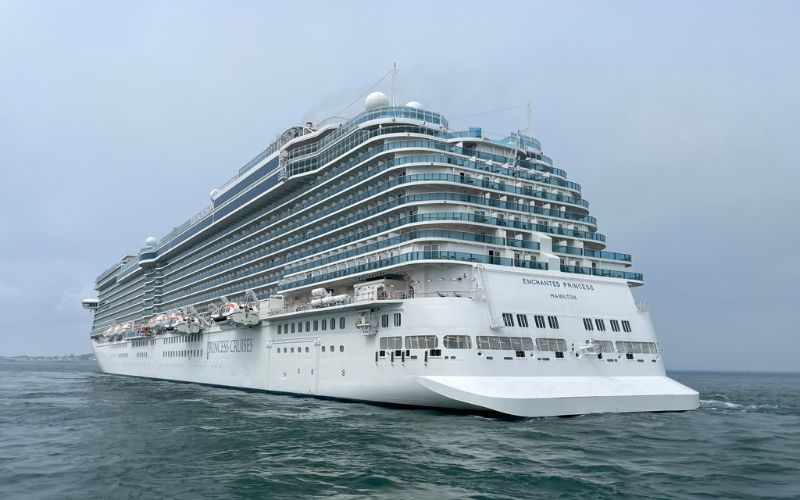
Depth (draft) explained
The depth at which a ship sits in the water is known as the draft. Most cruise ships typically have a draft of between 5 metres (16ft 5in ) and 10 metres (32ft 10in). The actual draft depends on the size of the vessel and how much fuel and ballast water is on board. A typical cruise ship draft is 8.5m (25ft 6in).
Draft is measured forward, aft and midship. The draft will determine which ports a cruise ship can enter. Smaller cruise ships typically have a draft of less than 7m (22ft 9in) and so they can enter smaller ports. This is why, when you cruise on a smaller ship, with a cruise line like Azamara or Silversea, you’ll get to visit the smaller, less-touristy ports of call.
The draft of a typical large cruise ship like Anthem of the Seas is 8.5 to 8.8 metres (about 28 feet). The largest cruise ships in the world, Royal Caribbean’s Oasis-class ships have a draft of 9.3m 30ft 7inch.
I have a table with the drafts of many cruise ships in this article, so you can compare them.
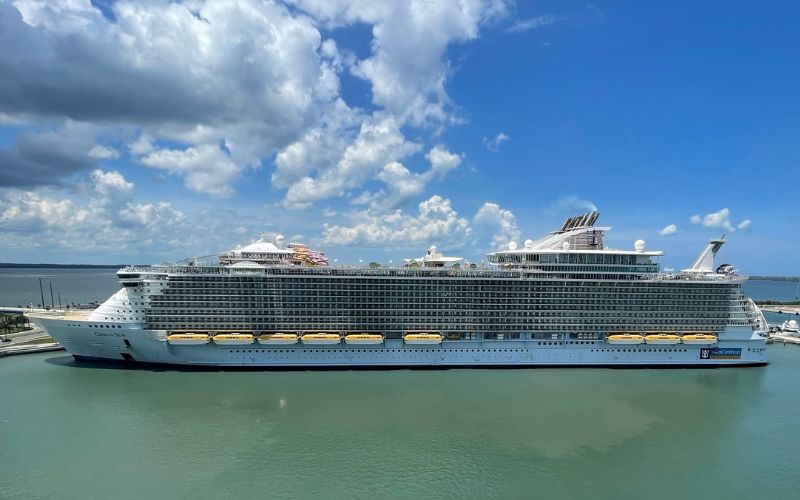
Draft marks
You can see how deep a cruise ship is sitting in the water by checking the draft marks. You’ll find these at the bow and the stern. This photo shows what they look like…
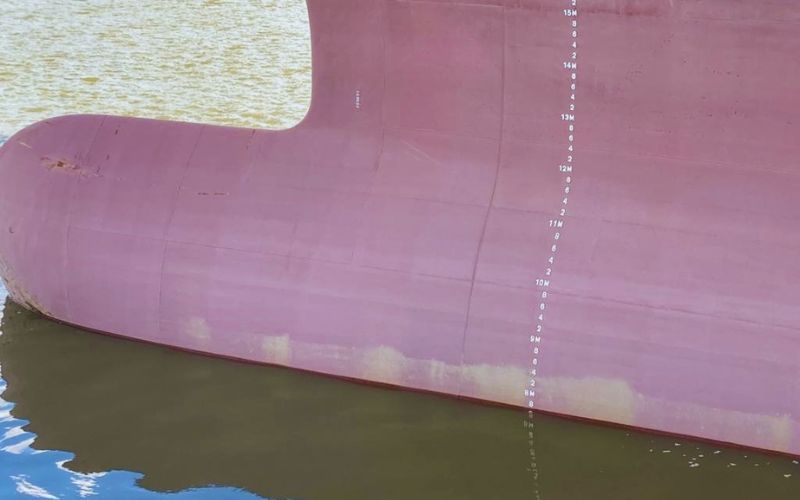
Load line
The marking on the centre of the vessel’s side is what is commonly known as the Plimsoll mark or load line. It is named after Samuel Plimsoll who campaigned for a safe maximum draft mark, which was enacted in 1875.
The line through the circle is the maximum point the vessel can be loaded to, the ladder arrangement immediately forward shows different maximum drafts under certain conditions.
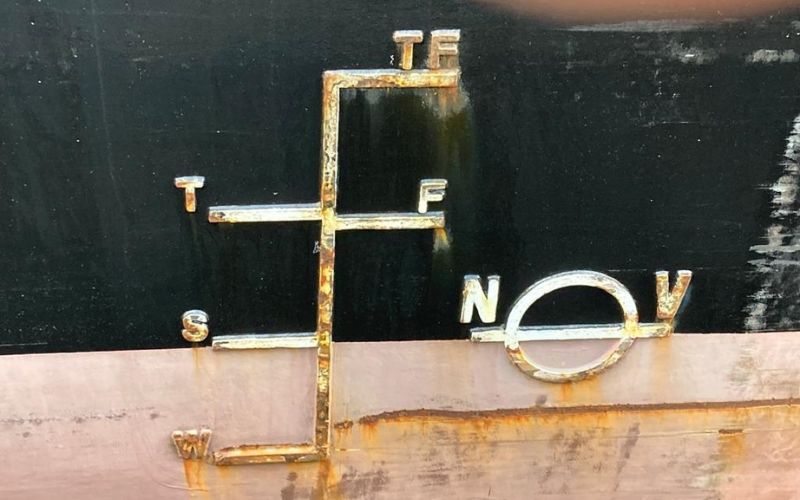
The T stands for Tropical, the S stands for Summer and the W stands for Winter. But for practical reasons (this can vary as to the regions of the world and time of year) and on most cruise ships, the S load line is used. It is illegal for vessels to sail with this mark submerged. If they do, they are overloaded.
The N and V relate to the ship’s classification society. These bodies ensure that the vessel is constructed and maintained to the relevant international standards (E.g. NV is Bureau Veritas, LR is Lloyds Registrar etc.)
But how much of a ship is actually underwater?
Around 10% of a cruise ship is below the water. Some of the largest cruise ships in the world, Royal Caribbean’s Oasis-class ships, have a height above the waterline of around 72 metres (236ft 11in), and a draft below the water of around 9.3 meters (30ft 6in).
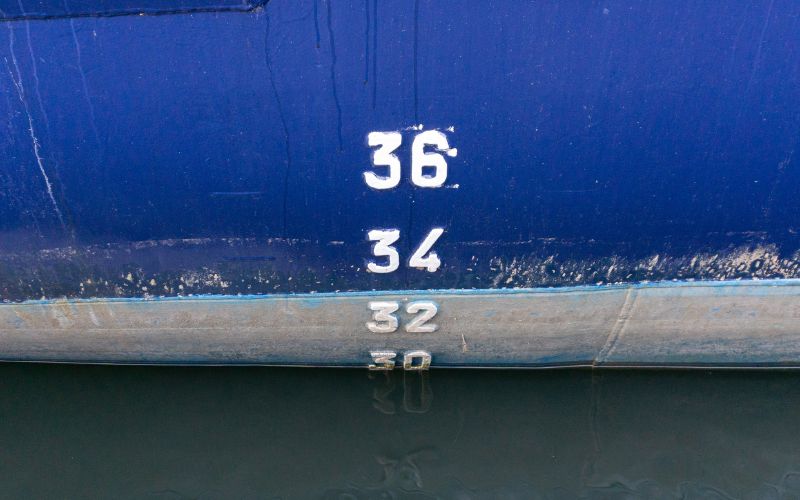
Smaller cruise ships may have only half as many decks, but as they aren’t as heavy, they don’t sit as deep in the water. So the percentage of the ship that’s below the waterline would still be roughly 10%.
So, why don’t ships just tip over?
Cruise ships are designed not to be unstable or to tip over (capsize). The combination of a wide hull, (known as “the water plane area”) low centre of gravity, fuel, and ballast tanks filled with water keeps a cruise ship from tipping over in rough seas.
A cruise ship’s centre of gravity can be moved up or down by adjusting weights within the vessel – the most obvious is ballast water and fuel. In extreme cases, cruise ship swimming pools could be drained to provide additional stability, as the weight of so much water on the upper decks will make the centre of gravity higher.
Most cruise ships have a mechanical stabilising system (referred to as stabilisers) that can be deployed when at sea. These take the form of extending fins that rotate and are able to impart a righting force when the vessel is moving ahead. They cannot remove rolling, but can reduce it considerably.
Most cruise ships also have bilge keels which also assist to limit the amount of roll. These are long, metal fins that are welded along each side of the ship.
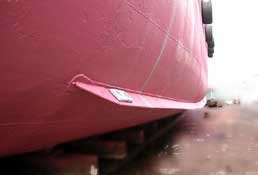
Photo: Dj245, CC BY-SA 3.0
Flat-bottomed girls
Most ocean cruise ships have flat bottoms. A square shape maximises space on board as well as making the ship more stable. A flat bottom also simplifies construction and dry docking.
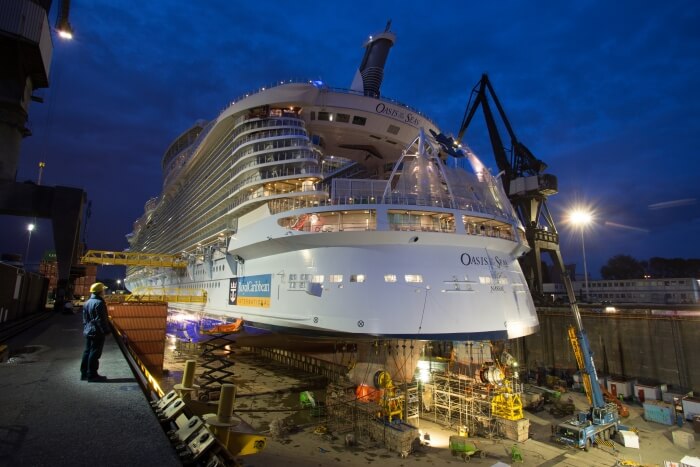
The bottoms of cruise ships are not flat near the bow nor at the raised area at the stern where the propellors are.
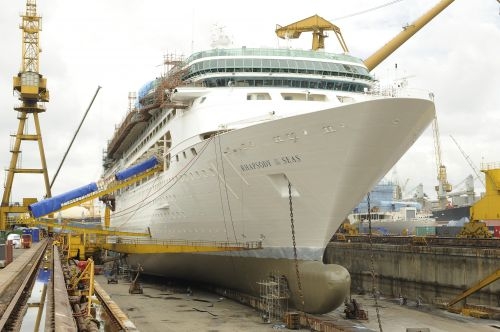
So, cruise ships can’t tip over? Well…
It is technically possible for a cruise ship to roll over, but it is highly unlikely that this would ever happen. The stability of cruise ships is continuously monitored by the Master and the ship’s navigational officers, and the weight distribution is adjusted as required to maintain safety.
Any ship can capsize if the weight distribution and buoyancy are compromised to provide negative stability. But in the case of large vessels like cruise ships, tipping over would be almost impossible, even in the roughest seas.

The last time a ship tipped over
The last time a cruise ship of note tipped over was in 2012. The Costa Concordia struck rocks and suffered an uncontrolled ingress of water. The vessel became progressively more unstable and as she drifted ashore on the island of Giglio, the ship touched the ocean floor which imparted an upwards force to the vessel bottom, resulting in the ship tipping over.
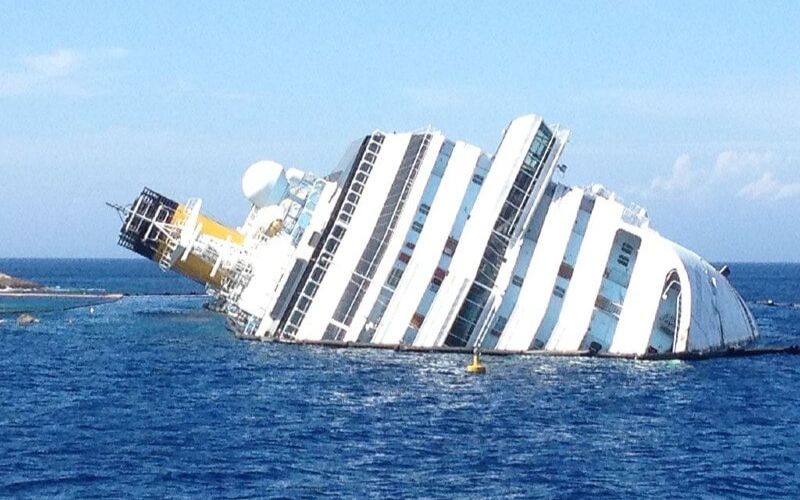
Read more: How Many Cruise Ships Have Sunk?
The bottom line
The design of cruise ships is very clever indeed. The U-shaped hull, flat bottom and added features like stabilisers and bilge keels all help to prevent rolling and keep a ship upright.
Added to that, the Master and deck officers are constantly monitoring the stability and adjusting the ballast etc as needed to keep the ship upright and to maintain the amount of stability within acceptable parameters for the comfort of the guests
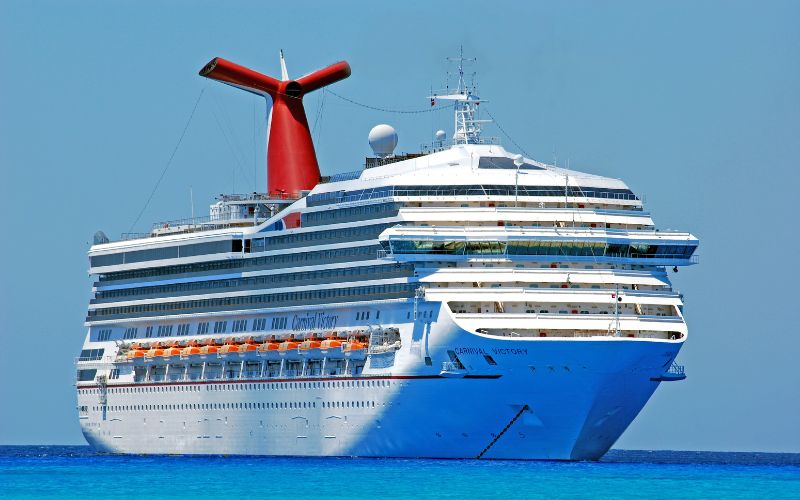
So, if you’ve ever been worried that your cruise ship might tip over in bad weather, you really don’t need to. The chance of a cruise ship ever capsizing is incredibly small.
And now you know how cruise ships float, you have the knowledge to impress your friends with the science.
After all, most people have no idea how ships float, as you can see in this hilarious collection of answers people gave: 15 ‘Definitely Real’ Reasons Why Cruise Ships Don’t Sink.
Related posts:
- What Happens If There Is A Hurricane While On A Cruise?
- What Happens If A Cruise Ship Is Hit By A Rogue Wave?
- How Fast Do Cruise Ships Go?
- Where Is The Costa Concordia Cruise Ship Now?
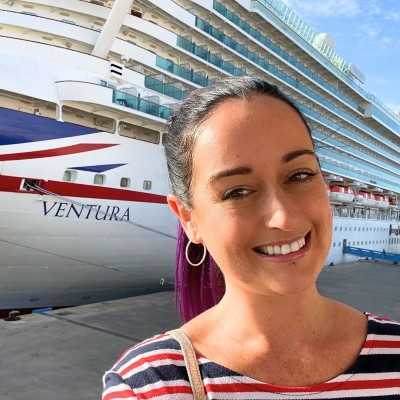
Jenni Fielding is the founder of Cruise Mummy. She has worked in the cruise industry since 2015 and has taken over 30 cruises. Now, she helps over 1 million people per month to plan their perfect cruise holidays.

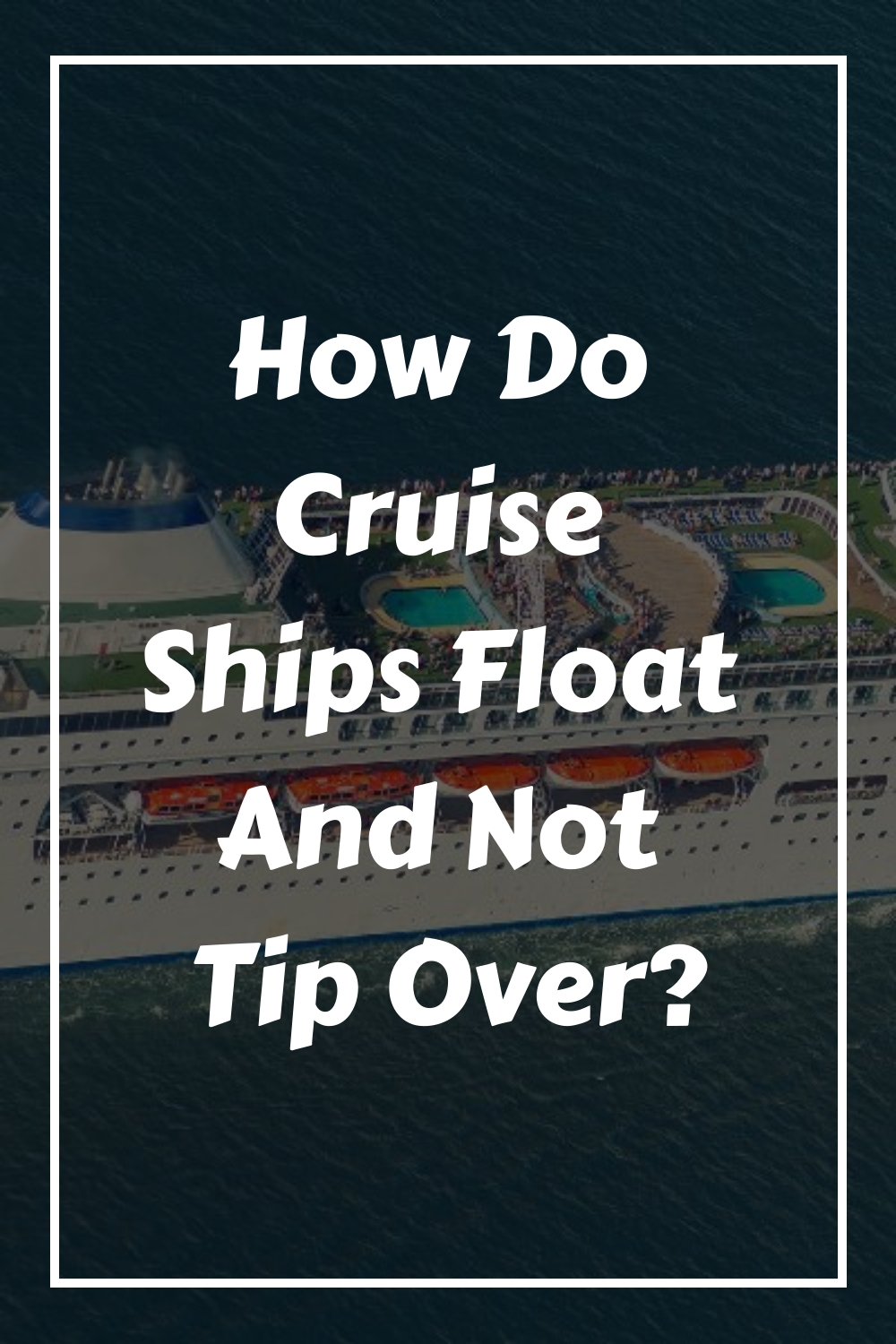

Hi cruise mummy,I’m going on my first ever cruise to Norway in April.Im a bit nervous!As my usual holidays are caravanning I’m concerned about what to wear!!It’s with p and o.Also what to pack!
Any advice would be grateful!
I’ve just watched Titanic(first time)!!!lovely story but????
Regards and thanks again
Sheila ⛴️😘